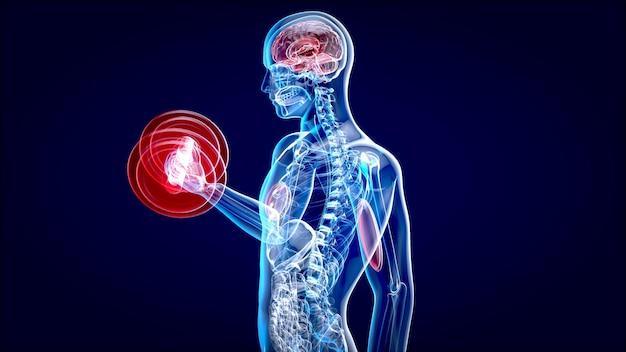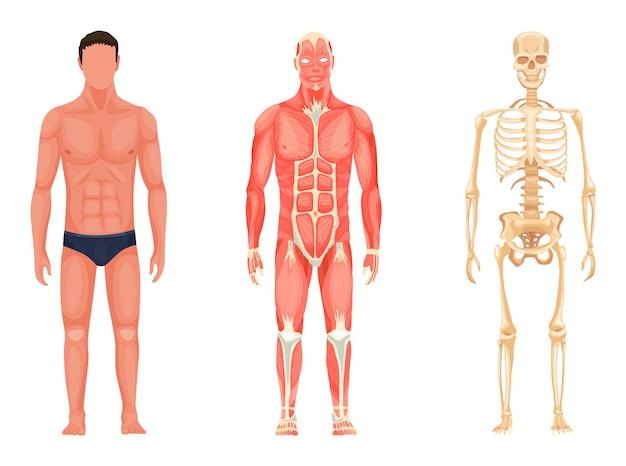Have you ever wondered why anatomy and physiology are essential in physical education? Well, you’re in the right place! In this blog post, we’ll dive into the fascinating world of anatomy and physiology and explore their significance in the field of physical education.
Anatomy is the study of the structure and organization of the human body, while physiology focuses on how the body functions. By understanding the intricacies of our anatomy and the intricate workings of our various organs, we can gain a deeper insight into how our bodies move and respond to physical activity.
Curious about the important organs involved in physical education? Interested in knowing if anatomy or physiology holds more importance? Wondering what the name of a specific organ is? We’ll address these intriguing questions and shed light on the significance of anatomy and physiology in physical education. So, let’s embark on this educational journey together!

Importance of Anatomy and Physiology in Physical Education
Physical education is a crucial component of a well-rounded education, and understanding the importance of anatomy and physiology in this field is essential for both students and educators alike. By delving into the inner workings of the human body, individuals can gain valuable insights into how it functions during physical activity, leading to improved performance, reduced risk of injury, and enhanced overall health.
Enhancing Performance through Knowledge
Learning about anatomy and physiology provides students with a solid foundation for excelling in physical activities. By understanding the structure and function of the body’s various systems, such as the skeletal, muscular, and cardiovascular systems, individuals can optimize their training routines and techniques. They can identify their strengths and weaknesses, develop targeted workout programs, and make adjustments to improve specific areas of their physical performance.
Reducing the Risk of Injury
Anatomy and physiology also play a crucial role in injury prevention. Educating students about the mechanics of the body helps them recognize potential risk factors and understand how to mitigate them. They can learn about proper body mechanics, correct form, and the importance of warming up and cooling down. Armed with this knowledge, students can make informed decisions to avoid injuries such as sprains, strains, or more severe conditions like fractures.
Improving Overall Health
Incorporating anatomy and physiology in physical education goes beyond improving performance and preventing injuries. It also fosters a deeper understanding of overall health and well-being. Students learn how regular exercise influences different body systems, improves cardiovascular health, enhances lung function, and boosts mental well-being. This knowledge empowers them to make informed decisions about their personal fitness goals and lifestyle choices.
Bridging Theory and Practice
Anatomy and physiology provide the theoretical framework that gives physical education a solid grounding. By studying these subjects, students gain a more profound understanding of the concepts behind physical activities. This knowledge helps them bridge the gap between theory and practice, enabling them to apply scientific principles to their training routines and sports performance. It cultivates critical thinking skills and encourages students to make evidence-based decisions to optimize their physical endeavors.
Inspiring Future Professionals
For students aspiring to become physical education professionals, studying anatomy and physiology is particularly crucial. These subjects form the basis of their future careers, equipping them with a strong foundation in understanding human movement, health, and exercise science. By embracing anatomy and physiology, students develop the skills and knowledge necessary to become effective educators, coaches, or fitness specialists, supporting others in their pursuit of a healthy and active lifestyle.
In conclusion, the study of anatomy and physiology within the realm of physical education is of paramount importance. It enhances performance, reduces the risk of injury, improves overall health, bridges theory and practice, and inspires future professionals. By incorporating these subjects into physical education curricula, we can empower students with the knowledge they need to thrive physically, mentally, and emotionally. So, let’s delve into the intricate wonders of the human body and unlock the secrets to achieving our full physical potential!

FAQ: What is the Importance of Anatomy and Physiology in Physical Education
Get to know the inner workings of your body and why they matter in physical education.
Why is the understanding of anatomy and physiology important in physical education
In the wild world of physical education, where sweat stains and muscle soreness are daily companions, a solid understanding of anatomy and physiology is the secret sauce to success. I mean, how can you run a marathon if you don’t know which muscles power your majestic stride, or how can you master a flawless basketball shot without understanding the intricate mechanics of your arm and shoulder?
Knowing the ins and outs of the human body helps you perform at your peak, avoid injuries, and make informed decisions to maximize your physical prowess. So, take a deep breath and prepare to dive into the mesmerizing world of anatomy and physiology.
What are the vital organs that play a significant role in physical education
Ah, yes, the superheroes of our bodies. Our changing rooms wouldn’t be complete without them! Here are some of the important organs that deserve a standing ovation:
1. Lungs – The Powerhouses of Oxygenation
If your lungs were a celebrity, they’d be Leonardo DiCaprio, because they are experts at breathing life into your physical activities. These bad boys take in oxygen and expel carbon dioxide, ensuring your muscles have the fuel they need during those intense workouts. So, thank your lungs for their commitment to your fitness ambitions.
2. Heart – The Cardio Commander
Cue the beat! Your heart isn’t just a hopeless romantic; it’s the meticulous commander of your cardiovascular system. It pumps blood, carrying all the essential nutrients and oxygen, to every nook and cranny of your body. It’s like your own personal chauffeur, ensuring that your muscles get the special treatment they deserve.
3. Muscles – Movers and Shakers
Let’s give a round of applause to the unsung heroes of physical education: our muscles! These powerful bundles of fiber tirelessly contract and expand, propelling us through any activity, from leaping hurdles to lifting weights. They’re like the stagehands of a grand performance, working behind the scenes to make you shine.
Is anatomy more crucial than physiology in physical education
Ah, the ultimate showdown – anatomy versus physiology! But let’s not turn this into a wrestling match, shall we? Both anatomy and physiology are like two peas in a pod, each bringing something unique to the table.
Anatomy is the study of the body’s structural components – the bones, muscles, and organs that make us who we are. It’s like knowing the blueprint of a building; understanding anatomy helps us comprehend how each part fits together and contributes to our physical abilities.
Physiology, on the other hand, focuses on how these body parts function and work together as a well-orchestrated team. It’s like understanding the inner workings of an engine; by delving into physiology, we gain insights into how our bodies generate energy, move, and adapt to different challenges.
So, you see, it’s not a matter of choosing one over the other. For a complete picture, you need both anatomy and physiology. It’s like having a burger without the bun or a dance floor without music; they’re best when they go together.
What is the name of that organ again
Wait, which organ are we talking about? The heart? The lungs? The spleen? We’ve thrown a lot of body parts your way, so let’s do a quick recap, shall we?
Lungs: These marvelous balloons of air are our ultimate oxygenators, ensuring our muscles stay fueled and ready for action.
Heart: Our muscle with a beat, the heart is the commander of the cardiovascular system, pumping blood to all corners of our bodies like a consummate chauffeur.
Muscles: The unsung heroes of physical education, these moving marvels contract and expand, helping us push boundaries and reach new heights.
And that’s just the tip of the anatomical iceberg.
With a solid grasp of anatomy and physiology, you’re well on your way to becoming a physical education expert. Embrace this knowledge, my friend, for it will help you unleash your true physical potential and understand the symphony playing within your very veins. So, keep learning, keep exploring, and let your body do the talking!
Remember, knowledge is power, especially when it comes to your own body. So, let curiosity be your compass as you uncover the mysteries of your physical self.
